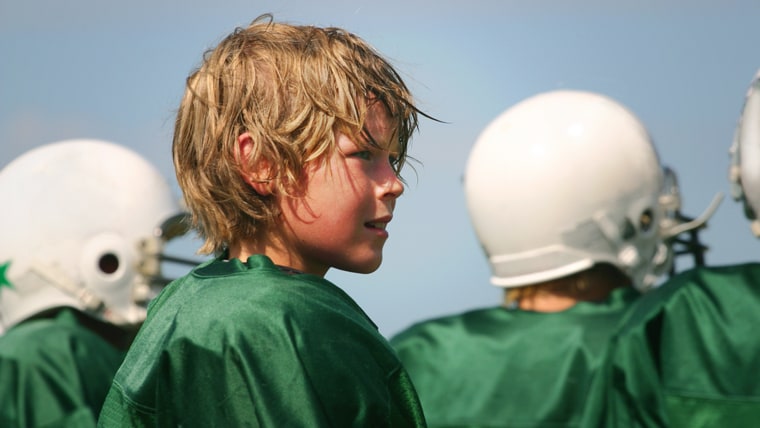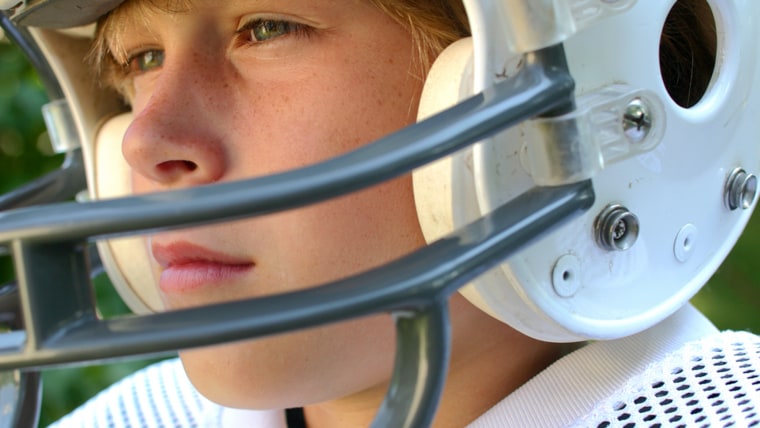The age at which boys start playing tackle football may have a big impact on brain health later in life, a new study suggests.
Former NFL players who started playing tackle football before the age of 12 were at a higher risk of altered brain development compared to those who stared later in life, according to the study published in the Journal of Neurotrauma.
The study adds to the mounting evidence that developing brains are more vulnerable to repeated hits, said study coauthor Robert Stern, a professor of neurology, neurosurgery, and anatomy and neurobiology at the Boston University School of Medicine. Stern is also director of the Clinical Core of the Alzheimer’s Disease and CTE Center.

“Participation in sports can have so many important benefits, including development of leadership and social skills, not to mention health benefits,” Stern said. “Our goal from this study and our other research is to make sure children can take advantage of all those benefits without the risk of long term health benefits.”
The researchers focused on a large brain structure called the corpus callosum.
“The corpus callosum can be seen as a super highway that connects the left and right hemispheres of the brain,” Stern said.
The new study follows closely on the heels of another report by the same researchers showing that NFL players who started playing tackle football before age 12 showed greater declines in memory and cognitive functioning compared to peers who started later.
RELATED: 'Friday Night Tykes' reveals kids are getting recruited for football at age 3
Both reports included data from former NFL players who were part of a larger study, dubbed DETECT. That study was designed to find ways to diagnose chronic traumatic encephalopathy — a degenerative brain disease that has been linked to repeated jolts to the head — in living patients. To be eligible for DETECT, participants had to have already begun to have problems with thinking and/or memory.
All the men in the new study had played organized football for more than 12 years.
The former players’ brains were scanned using a type of imaging known as Diffusor Tensor Imaging (DTI), which looks at the health of the nerve cells’ communication cables, called axons. For axons to work efficiently, they must have an intact outer covering, just as an electrical wire needs to have insulation around it.

The DTI scans showed the men who started playing football before age 12 were more likely to have alterations in this outer covering.
Stern and his colleagues chose age 12 as their cutoff because boys between 10 and 12 are in a “critical window” of brain development. During this period, the axons’ outer covering is especially susceptible to injury, Stern explained.
Stern cautioned that results from a group of NFL players might not apply to boys who do not go on to play professional sports, or to boys participating in other sports, or to girls.
RELATED: Here's the kicker: This homecoming queen also stars on her school's football team
He said more research was needed before any hard and fast rules on kids and tackle football could be made. Still, Stern said, “the take home message, regardless of the results of this study, is that children whose brains are rapidly developing shouldn’t be hitting their heads over and over again."
Stern's coauthor, Dr. Robert Cantu, believes there’s already enough data to make recommendations.
“Violent collision sports should be modified,” said Cantu, a clinical professor of neurology and neurosurgery at the BU School of Medicine, clinical director of the Robert C. Cantu Concussion Center at Emerson Hospital and coauthor of “Concussions and Our Kids: America’s Leading Expert on How to Protect Young Athletes and Keep Sports Safe.”
“Tackle football is a poor choice of sports for children under age 14,” Cantu said. “Flag football would be fine. Heading in soccer should not be carried out before age 14. And ice hockey shouldn’t have full body checking until age 14. No head trauma is good head trauma. But head trauma at an early age sets you up to have later life problems that you (would) not otherwise have had.”

This is one of the few studies to actually look at brain structure, said David Hovda, a professor of neurosurgery and director of the Brain Injury Research Center at the University of California, Los Angeles.
“The bottom line, is that this may serve as a warning to people who have very young children participating in any type of activity that involves banging your head,” Hovda said.
The condition of the corpus callosum may be particularly telling when it comes to long-term damage from head impacts, said Dr. Douglas Smith, a professor of neurosurgery and director of the Center for Brain Injury and Repair at the University of Pennsylvania.
RELATED: Super Bowl parenting: Why the NFL is still welcome in one mom's house
“The area of the brain that they looked at behaves like the apex of the wishbone,” Smith said. “During a concussion or more severe traumatic brain injury, the two hemispheres can get pulled apart because of the very ridged structure that separates them. It’s still early but this suggests that the corpus callosum may be like a dose meter or radiation badge. So depending on how many times the brain gets pulled, it will change how the fibers that cross that spot will respond.”
What studies like this one underscore is that being young adds to the risk of brain damage, Smith said.
“Emerging data suggests that children’s nerve fibers may be more sensitive to traumatic injury than adults,” he added. “In addition, there may be a ‘period of vulnerability’, when subsequent head impacts may impart exaggerated damage to the nerve fibers.”